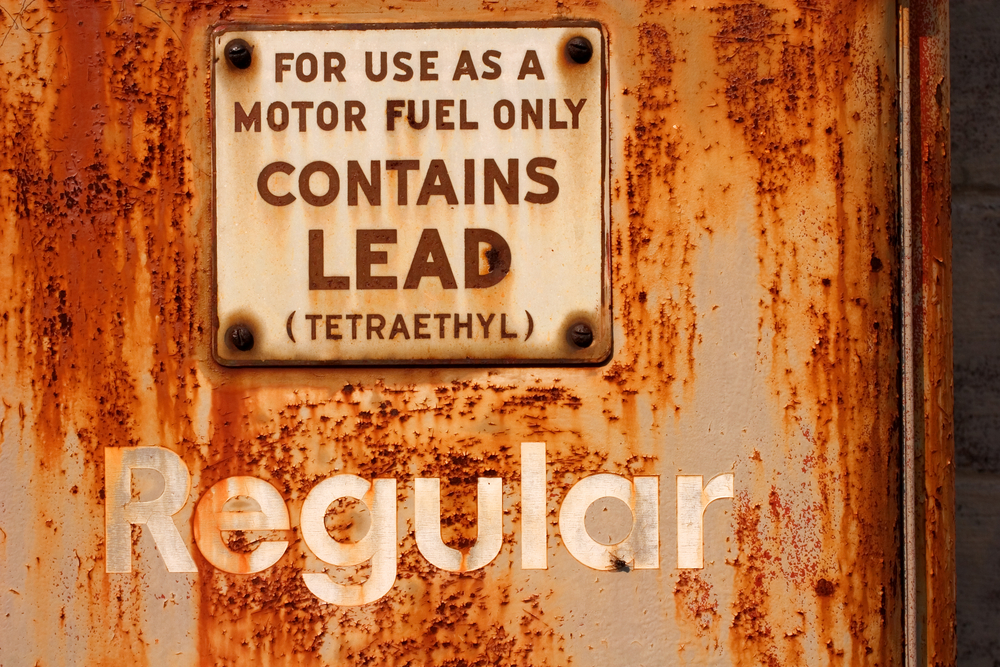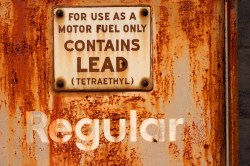Kevin Drum has a fantastic piece in Mother Jones about the connection between lead and crime, as Philip noted earlier. It turns out that the rise and subsequent plunge in violent crime over the last half-century tracks almost exactly with the rise and decline of lead in the environment, mainly due to leaded gasoline. Through various studies, the correlation has been found at the international, national, state, city, and even neighborhood level. And there is copious neurological research showing that “even moderately high levels of lead exposure are associated with aggressivity, impulsivity, ADHD, and lower IQ,” which makes a pretty strong (if defeasible) case for causation.
It’s a fascinating story for all sorts of reasons — and Drum’s been adding more tidbits on his blog — but as I was reading, the thing that kept striking me is how perfectly the lead fight encapsulates all the promise and perils of pollution fights generally.
We start using something before we understand whether it’s safe. We begin to discover it’s not safe. Industry obscures the science and viciously battles off regulation for as long as possible, forecasting economic doom. Lots of people get sick and die while they do so. Finally some regulations are put in place. The costs of complying turn out to be lower than anyone predicted. The benefits turn out to be much greater than anyone predicted. The pollutant turns out to be more harmful than originally thought. Despite all of the above, industry continues battling efforts to further reduce the pollutant, while claiming credit for the benefits of reducing it as much as they were forced to.
Over and over and over, this story plays out. Yet with each new pollution fight, it’s as though we’ve never had all the previous ones. (See: chlorofluorocarbons, mercury, smog, phthalates, etc.)
But there are other aspects of the lead story that resonate as well. For instance, one of the great mysteries in Drum’s piece is why, with the accumulation of so much evidence, criminologists and policymakers have not taken the lead explanation/problem more seriously.
I suspect two things are at work. One, we think of pollution as an “environmental problem,” which we have compartmentalized, both institutionally and mentally. Those are the problems where greens fight industries over public health. The notion that environmental pollutants have material (and large!) effects on crime, family life, population density and migration, economic inequality, productivity, and employment just doesn’t get much attention. We have trouble thinking holistically.
The second reason Drum identifies as “interest groups”:
Political conservatives want to blame the social upheaval of the ’60s for the rise in crime that followed. Police unions have reasons for crediting its decline to an increase in the number of cops. Prison guards like the idea that increased incarceration is the answer. Drug warriors want the story to be about drug policy. If the actual answer turns out to be lead poisoning, they all lose a big pillar of support for their pet issue. And while lead abatement could be big business for contractors and builders, for some reason their trade groups have never taken it seriously.
Environmentalism has always had an interest-group problem. There are always powerful interest groups that benefit from polluting. By contrast, the only interest group that fights for the kind of broad, diffuse increase in social welfare produced by pollution reduction is … environmentalism.
Which isn’t nothing! Organized environmentalism has won a string of victories over various air and water pollutants over the last half-century — victories that are the envy of other countries. But many, many times, it has been stymied for want of powerful, monied interests on its side. The public’s side.
And environmentalism has reached its limits with climate change. There are just too many interest groups that stand to lose if emissions are sharply reduced, while the increases in social welfare are (or seem) distant in time and space. That’s what all the “green jobs” and “military green” and “corporate green” pushes have been about: convincing interest groups that they stand to gain. Unfortunately, interest groups that don’t quite exist yet aren’t as powerful as those that have been around for a century. Like Machiavelli said, “there is nothing more difficult to plan, more doubtful of success nor more dangerous to manage than the creation of a new system. For the initiator has the enmity of all who profit by the preservation of the old institution and merely lukewarm defenders in those who would gain by the new one.”
Another thing in the lead story that resonates: The huge decline in crime was not something anyone predicted when they were fighting against leaded gasoline. What had been shown was that lead screws up young brains, and so they predicted fewer screwed-up brains. But when people have healthier brains, they’re also more productive, and the economy benefits. They also commit less crime, so society benefits. They are also more caring and supportive of their own children, so future generations benefit. Etc. Etc. These are second- and third-order effects, “system of system” effects, which are incredibly difficult to predict beforehand. Doing so requires all sorts of heroic assumptions and educated guesses. Most such effects never show up in official cost-benefit analysis.
That kind of epistemological conservatism is necessary; you can’t make policy based on people’s competing hunches about second-order effects. And yet! Benefits to public health do have these positive knock-on effects. Perhaps we can’t predict them in advance, or fully quantify them, but we can learn from history. We know that public health benefits ripple outward. That knowledge should count when policy is made.
And finally, note that the job on lead is not done. Lots and lots of it remains in our environment, mainly in soil and buildings and homes with lead paint. We could benefit immensely by further reducing it. Drum:
Put this all together and the benefits of lead cleanup could be in the neighborhood of $200 billion per year. In other words, an annual investment of $20 billion for 20 years could produce returns of 10-to-1 every single year for decades to come. Those are returns that Wall Street hedge funds can only dream of.
And yet, we’re not doing it, not in any serious way. Not only are we not applying the lessons of lead to other pollution fights, we’re not even applying the lessons of lead to the lead fight. Why don’t we learn?
Anyway, enough rambling. Read Drum’s story. It is as clear a distillation as you’ll ever find of glories and dysfunctions of environmental cleanup.





